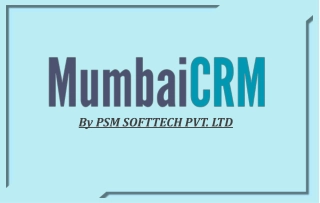
Preventive and Social Medicine Exam Pointers by Dr. Ajay Gupta
Explore key topics in preventive and social medicine including the Ayushman Bharat Programme, blindness, sustainable development goals, health targets, and government health schemes. Gain insights into important data and updates in the field. Prepare effectively for your exam with essential pointers provided by Dr. Ajay Gupta.
Download Presentation

Please find below an Image/Link to download the presentation.
The content on the website is provided AS IS for your information and personal use only. It may not be sold, licensed, or shared on other websites without obtaining consent from the author. If you encounter any issues during the download, it is possible that the publisher has removed the file from their server.
You are allowed to download the files provided on this website for personal or commercial use, subject to the condition that they are used lawfully. All files are the property of their respective owners.
The content on the website is provided AS IS for your information and personal use only. It may not be sold, licensed, or shared on other websites without obtaining consent from the author.
E N D
Presentation Transcript
Exam pointers for Preventive and social medicine Dr. Ajay Gupta 1
Table of Contents Ayushman Bharat Programme Blindness Sustainable Development Goals (SDGS) Health Targets Important Data Government Health Schemes Biomedical Waste Rules Update 2018 Miscellaneous 2
Ayushman Bharat Programme Ayushman Bharat Programme in the Union Budget 2018. New flagship National Health Protection Scheme, providing a health insurance cover of 5 lakh a family per annum. The scheme will cover 10 crore vulnerable families, with approximately 50 crore beneficiaries. The scheme would be the world s largest healthcare programme Creation of health and wellness centres, which will bring healthcare closer to home . These centres, 1.5 lakh in number, will provide free essential drugs and diagnostic services 3
Blindness Definition of Blindness : According to the new definition, a person who is unable to count fingers from a distance of three metres would be considered "blind" as against the earlier stipulation of six metres NPCB = 'National Programme for Control of Blindness and Visual Impairment' NPCBVI) Goal is to reduce preventable blindness to 0.3 % by 2020, presently it is 1% 4
Sustainable Development Goals (SDGS) The SDGs include 17 goals and 169 targets Goals 1-6 directly address health disparities, primarily in developing countries. SDG1. No poverty SDG2. Zero hunger SDG3. Good health and well-being SDG4. Quality education SDG5. Gender equality SDG6. Clean water and sanitation 5
Health Targets The health goal has nine targets and four sub points. The first three targets are continuation of MDGs (Millennium Development Goals), the next three are on non-communicable disease (NCD), and the last three are mixed Nine health targets are as follows:- 1. Reduce the global maternal mortality ratio to below 70/100,000. 2. Reduce neonatal mortality to below 12/1,000 and U5MR to below 25/1,000 3. End the epidemics of AIDS, tuberculosis, malaria, and neglected tropical diseases and combat hepatitis, water-borne diseases, and other communicable diseases 4. Reduce by one-third premature mortality fromnon-communicable diseases 6
Health Targets 5. Strengthen the prevention and treatment of substanceabuse 6. Halve the number of global deaths and injuries from road traffic accidents (by 2020) 7. Ensure universal access to sexual and reproductive health-care services 8. Achieve universal health coverage 9. Reduce the number of deaths and illnesses fromhazardous chemicals and air, water, and soil pollutionand contamination 7
Important Data HDL: 0.55 GFR: 2.3 SR in India= 940/1000 0-6 Sex ratio= 914/100 Lowest Sex Ratio overall= Delhi Highest Sex Ratio overall= Kerala Highest Sex Ratio 0-6 = Mizoram Birth Rate= 21.6 Death Rate = 7 Growth Rate= 1.45 8
Government Health Schemes Rashtriya Bal Swasthya Karyakram (RBSK) (0-18) : Child health screening and early Intervention Services through early detection and management of 4 D's i.e Defects at birth, Diseases, Deficiencies, Development delays including disability Rashtriya Kishor Swasthya Karyakram (RKSK) (10-19): RKSK focus on nutrition, sexual & reproductive health, injuries and violence (including gender based violence), non-communicable diseases, mental health and substance misuse 9
Government Health Schemes National Urban Health Mission (NUHM) Covers all cities and towns with more than 50,000 population as well as District headquarters and State headquarters. Cities/towns with population less than 50,000 will continue to be covered under NRHM. Under NUHM, provision has been made for creation of service delivery infrastructure which is largely absent in the urban areas i.e. cities/towns, by way of providing Urban Primary Health Centres (U- PHCs) and Urban Community Health Centres (U-CHCs). U-PHCs for app. 50,000 population, preferably located near slums U-CHCs for providing in-patient care in cities having population above five lakhs have been envisaged NUHM also provides for engagement of ANMs for conducting outreach services to target groups particularly slum and the vulnerable population through ASHA and Mahila Arogya Samiti (MAS) MAS for every 50-100 households having 250-500 population One ASHA per 1000-2500 population covering approximately 200-500 households would serve 10
Government Health Schemes PENCIL : an electronic platform for effective enforcement for no child labour developed by Ministry of Labour and Employment. PENCIL Portal has following components: a. Child Tracking System b. Complaint Corner c. State Government d. National Child Labour Project e. Convergence Antara' and 'Chhaya': The Union Ministry of Health and Family Welfare launched two new contraceptives- an injectable contraceptive MPA under the Antara programme and a contraceptive pill Chhaya in the public health system to expand the basket of contraceptive choices for couples. 11
Biomedical Waste Rules Update 2018 Hypochlorite concentration brought down to 1-2%. Cardboard boxes for blue waste to be replaced by puncture proof and leak proof boxes and containers In-situ pre-treatment of waste can be done as per WHO Blue Book 2014 Deadline for phasing out of chlorinated plastic bags and gloves shifted to 27th March 2019 Bar coding guidelines to be issued by CPCB by 27th March, 2019 12
Miscellaneous Government expenditure on Health in 2018 is 1.15 % of the GDP to 2.5 % by 2025 Nobel Prize 2017 in Physiology or Medicine was awarded to Jeffrey C. Hall, Michael Rosbash and Michael W. Young "for their discoveries of molecular mechanisms controlling the circadian rhythm". WHO s theme for World Health Day, 7 April 2018: Universal Health Coverage: Everyone, Everywhere (14 February 2018) WHO has issued guidance for use of Bedaquiline and Delamanid, the new drugs for treatment of adults with Multi-Drug Resistant Tuberculosis (MDR-TB) India's position in Global Hunger Index (GHI) report as on 2017 is 100 JEET: Joint Effort for Elimination of Tuberculosis 13
Thank You 14






















